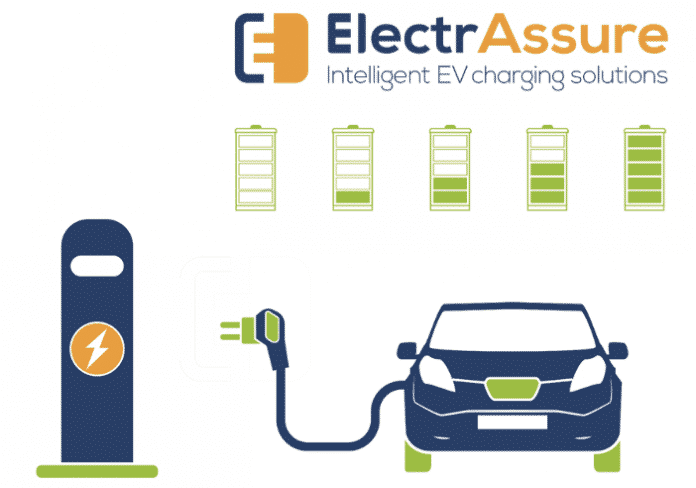Correct implementation of workplace electric vehicle charging infrastructure is crucial to the viability of electric fleet vehicles. It makes charging an easy process and enables vehicles to be ready for use when required. So, how can you ensure that the charging system that you are installing are the best fit for your fleet and your business operations?
Choosing the Vehicle:
The type and use of the vehicles and the required charging speed determines the charging infrastructure required.
One ElectrAssure customer is a train network operator within an Ultra-low Emission Zone and is under pressure from the franchising authority to adopt low emission vehicles for its fleet. Its engineers operate on an 8 hour shift and return to the central depot with a typical daily mileage of less than 100 miles. This operating structure lent itself perfectly towards implementing an electric vehicle fleet.
However, there were circumstances where emergency call-outs were necessary, and the operational fleet needed to mobilise quickly to satisfy their SLA. Because of this, a rapid charger was proposed – as the customer pointed out, ‘the penalty for missing the SLA would pay for a rapid charger’.
ElectrAssure specified a fully customisable 50kW Delta Ultrafast Charger that can be upgraded to 150kW and has on-board load management software. The result is a flexible and upgradable EV charging solution that supports the client’s business now and makes provision for the predicted requirements for the next 3 years.
Finding the Power
Without adequate electrical capacity, charging will be slower than required or the chargers will overload the electrical supply.
ElectrAssure conducts detailed surveys of the existing electrical infrastructure and supply to each site. This determines whether there is capacity available for the electric vehicle chargers.
But what if it isn’t?
It is all too common for the existing supplies to be unsuitable for substantial charging installations. There are, however, options available that can be relatively inexpensive and relatively disruption free.
The electricity network operator (DNO) can advise on the possibility of an increase in supply either through upgrades to the fuses, incoming cabling or both to allow the for the increased loads required by charging equipment.
Alternatively, some manufacturers of charging equipment offer load management capabilities. Load management enables the chargers to operate at a pre-defined maximum load and balance the power required across all active chargers. Dynamic load management operates in a very similar way, but it monitors the total electrical load and only supplies the capacity available to the chargers.
One of ElectrAssure’s large operational fleet customers with a varying and growing number of vehicles had a supply capacity problem. ElectrAssure was invited to survey their main depot after two other contractors had provided proposals for charging infrastructure.
When carrying out the survey it was found that there was simply no spare capacity. Not only that, but by installing the proposed charging equipment, the customer would have been in breach of their contracted maximum capacity from their energy provider and this would have resulted in fines and sanctions.
Enquiries were made with the local electricity network operator and it was found that an upgrade of the supply was available by simply changing the main fuses and metering equipment. This, coupled with a load managed charging solution, will allow the customer to install the larger number of EV chargers required to support their ever-growing fleet of electric vehicles.
Had the capacity survey not been carried out prior to installation of the new charging infrastructure, the customer would have a charging system that was not viable.
Managing the chargers:
‘Smart’ electric vehicle chargers are connected to a cloud-based management network known as a ‘back office’. A correctly specified back office records and controls the use of the chargers by authorised users, allows payment to be taken for use of the chargers and provides remote monitoring and maintenance.
In excess of 90% of reported faults can quickly be rectified on-line which enables very high levels of charger availability.
In summary, there is no ‘one fits all’ blueprint for installing electric vehicle charging infrastructure for fleets. It must be tailored to the individual needs of drivers, the vehicles and the operation of the business to enable you to realise all of the benefits of electric vehicles.

For more information visit: www.electrassure.co.uk




